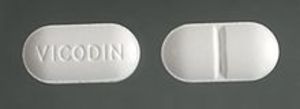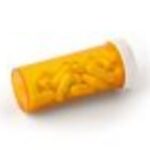Vicodin is a powerful opiod painkiller which, in a perfect world, is only prescribed for short-term pain. The big problem with Vicodin is that over time the body gets used to it and it becomes less powerful. You eventually need to take more Vicodin to get rid of the same amount of pain.
But Vicodin also brings along other side effects other than pain relief and these can be very attractive to some people. Vicodin can make one sleepy, tranquil, relaxed, euphoric and not bothered the stresses all around them. However, Vicodin addicts find that they also need to take more and more Vicodin to get the same effects. They may need to add something else to the Vicodin – like another painkiller, an anti-anxiety drug like Xanax or alcohol – in order to get the desired sensations.
No Apparent Symptoms
One of the reasons Vicodin addiction is so powerful is because by the time anyone other than the addict can see symptoms, the addiction is advanced. Unlike heroin, Vicodin doesn’t leave any marked physical signs. The first few times a person takes Vicodin, they may become drowsy, dizzy or giggly, but these soon go away. Addicts may seem to act perfectly normal.
Until they miss a dose or try to come off of Vicodin cold turkey.
Withdrawal
This is when the addiction is most apparent. The addict’s body has gotten so used to Vicodin doses that it thinks that it can only be normal when it has Vicodin. In order to make the brain get the Vicodin the body thinks it needs, it sends out great waves of pain. This pain may differ from person to person.
This can be muscle cramps; sudden diarrhea or constipation; massive amounts of sweating no matter what temperature it is; nausea; vomiting; strange skin rashes; mood swings; coordination problems and migraines. Some people may also experience hallucinations, chills or fever. According to The Canyon, a rehab center in Malibu, California, these withdrawal symptoms can last for days, usually becoming most painful about 72 hours after the last Vicodin hit.
Non-Physical Symptoms
It may take an intervention and professional help before a Vicodin addict voluntarily goes through withdrawal. The pain is reported to be excruciating and terrifying. One aspect of Vicodin that is alluring is that it seems to bring comfort and a sense of control to the addict. But the addict may give off other signs that he or she is addicted to something.
They become suddenly withdrawn from family and friends and want to be alone. Perhaps they claim to be ill all of the time and needs to see a doctor. They may borrow money and never return it. They may start stealing in order to pay for the addiction. They may be caught with several prescriptions for Vicodin or similar medications and calls around to more doctors (even those out of state) to get more prescriptions. If you are taking Vicodin, you may be asked how much money you want for your prescription. If you refuse, then you may find your pills stolen.
Resources:
The Canyon Rehab: Vicodin Addiction Symptoms http://www.thecyn.com/vicodin-rehab/vicodin-addiction-symptoms.html
Drugs.com: Vicodin Information http://www.drugs.com/vicodin.html
Dug Addiction.com: Doctor Shopping: Chronic Pain Medication Addiction http://www.drug-addiction.com/doctor_shopping.htm
eMedTV.com Vicodin Withdrawal Symptoms http://pain.emedtv.com/vicodin/vicodin-withdrawal.html





